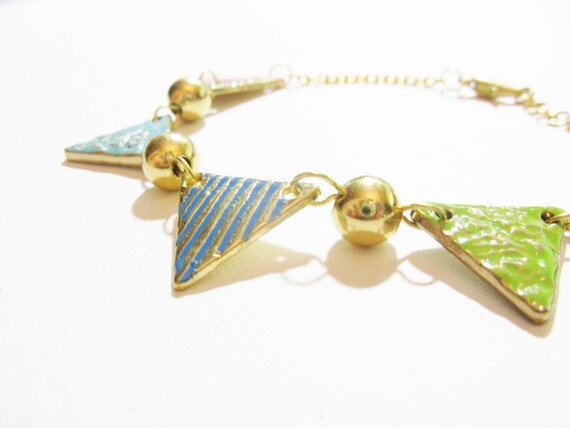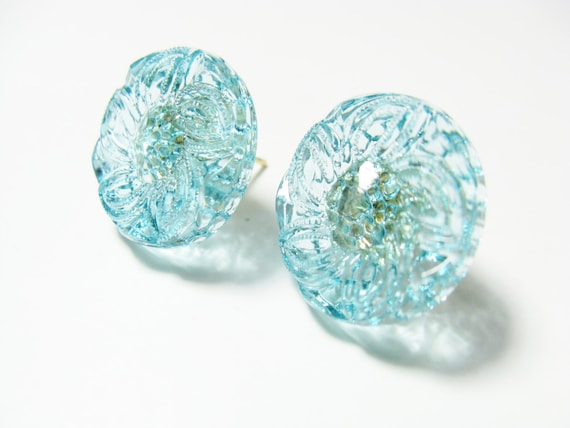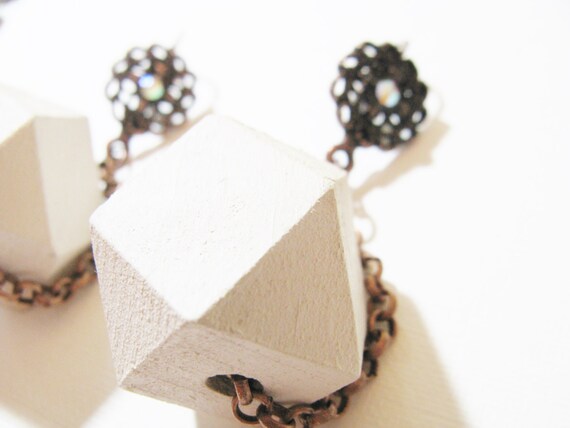I got this great info from some friends on Etsy that was gathered from the blog referenced below. Its a good starting point for understanding Etsy and how to be found!
**** Basic Facts and Tips for Shop Owners on Etsy ****
First general terms and definitions:
a. Key Words: words/phrases specific to an item that help define exactly what that item is.
b. Google: this term is sometimes use d to refer to any internet search. It is also a specific search engine made by Google. The company made its name with this search engine. Other search engines are: Yahoo, Bing, Duckduckgo, Mahalo, Ask Jeeves and quite a few others. Google is king, which is why it has become a verb. “Google it”.
For this paper the term "google" will be used as a collective term that will represent all search engines
c. Primary key word phrase: the main phrase/idea/category you choose to optimize your shop/section/listing. d. Secondary key word phrase: a phrase for a secondary area/idea that is chosen for optimization. e. Optimization: "thinking like a customer" meaning select the most likely terms a customer would use to search for your items.
e. Lead sentence/photo: refers to the first sentence/photo
f. Tags: 2-3 word phrases that describe an item.
g. Internal link: a link (URL or web address) in your item description to return the customer either to your shop, another related item in your shop or a section of your shop. The purpose is to keep your customer in your shop as long as possible. URL stands for Uniform Resource Locator.
h. SEO: acronym for "Search Engine Optimization" or making the info in your shop as optimal as possible so your shop/items can be found on the internet in a search.
i. Relevancy Searching: the method Etsy and Google use to match customer search terms with seller item titles. Relevancy is a 'best match' function. The listing title that 'best matches' the search terms used will be ranked highest on the list of search returns. The ultimate goal of title creation is to match 'exactly' the same words in the same order that is entered into the search box by a customer.
For example search term entered is "Baby Girl Hair Bows". Any item title that matches that term exactly (both words used and word order) will be listed ahead of any item title that contains the same words but in different locations or word order, i.e. "Girl Hair Bows, Baby Hair clips".
j. Search algorithm: code written by Etsy/Google techs. This coding defines the criteria used to determine what, and in what order to select items for search results. (Very simplified explanation, but you get the idea).
***********
***********
Who uses what:
1. Shop Title: used by Google- Designed for a brief key word rich description of what is sold in your shop. important to google ranking and SEO. Should remain relatively static once desired terms are chosen. Changing frequently breaks established links and indexing.
2. Shop Announcement: used by Google- Like shop title, however, first paragraph is most important. First sentence should duplicate shop title. Second and third sentences should provide information about owner (training, shop philosophy and sources of inspiration). Important to google rankings and SEO. Just as with your shop title, the information in this first paragraph should remain relatively static as change breaks the established links and associated indexing.
3. Section Titles: used by Google- like the shop title, designed to contain key word rich phrases that specifically describe the items within each section. Each section title provides a 'landing page' or 'doorway' into your shop. 10 sections provided and all should be used if possible. Better to have too many than too few. Again, frequent changes are not recommended unless absolutely necessary.
4. Feature Items: used by Etsy and possibly by Google as the title (meta-tag) for each photo is searchable. This area located directly beneath your shop announcement is designed to contain photos of 4 items you which to “feature” or promote. Some people use them to show case their new listings, others use them to showcase a particular segment of their shop they are promoting. At any rate they should be used and only the best product photos should be chosen.
5. Item titles: Used by Etsy primarily and Google to a lesser degree. The first 3-5 words important to Etsy, entire title is 'read' by Google. Traditional thinking says first 3 words are most important. We suggest key words in up to the first 3-5 positions. Construct your titles using a primary and secondary key word phrase, with additional descriptive or 'filtering' terms at the end.
Words such as 'Free', 'Sale', 'OOAK', 'Unique', should not be used. Creative or Artistic titles should also NOT be used.
Two schools of thought on length of title. Google techs and guidelines state that the first 70 characters are all that are indexed. We recommend keeping titles to 7-10 words. There are some who promote the "long tail" theory of title construction which advocates "key word stuffing", filling up all the space allowed with various keywords in an unstructured manner. The evidence for this theory is anecdotal and has been debunked by google guidelines and techs. Repeating words in your title is OK if you only use the same word twice in the same title.
6. Item Description: Used by Google primarily and Etsy to a lesser degree. The first sentence is important to Etsy, entire description is scanned by Google for key word phrases which it uses to index item/shop. Powerful and important for Google ranking and SEO.
Lead sentence should contain a key word phrase similar to but not identical to your item title. I recommend placing your shop name in the lead sentence.
Body of description should contain absolutely all the essential information about your item. Do not assume your customer knows what you mean. They do not. Providing too much info is much better than providing too little. Describe your item as if you were talking to a blind person. Use terms that pertain to texture, quality, weight, color, smell, size (all dimensions) and possible uses.
Any measurements should be in both Imperial and Metric terms, word spellings should encompass both US English and UK English. Do NOT put shipping or return information in your listings. Provide an internal link to your policy page instead, if you feel it is necessary. If you provide wholesale pricing or quantity pricing mention that and request that customer contacts you for more information.
Every item description should contain at least one internal link and preferably two. One link should go to the item section, the other link should go to your main shop OR to complimentary items in other sections.
******One important note. It is very tempting to use the 'cut/paste' feature when writing descriptions. This is an absolute NO NO.
Google has, within the last year, gone to great lengths to write into their algorithm a key code that abhors duplication. This means that if they 'crawl' (computer speak for scan) your shop and find the same description over and over again, even with minimal changes, they will totally discount or ignore all listings that contain the description. This also includes any listings that you might have on other e-commerce sites such as Ebay, ArtFire, Zibbet, Weebly, etc.
Always write completely new descriptions for each item.*****
7. Tags: used only by Etsy. For best results, tags should be 2-3 words long as single word tags are not effective with a Relevancy based search algorithm. There are 3 top level tags that are chosen when creating a listing. These are very important as they determine the broad categories that your item will be listed in. They are single word tags that can not be changed initially. You are given a total of 16 tag slots, including the 3 top level tags, use them all. The order of your tags is irrelevant and you can repeat the same word when used in a new tag.
One absolutely essential factor in creating tags is to create tags that duplicate your title as closely as possible. Consistency with your item title, repeating key words in your description and creating matching tags is fundamental in obtaining good Etsy relevancy search results and Google SEO and Ranking.
8. Photos: Excellent photography is essential for capturing your customer's interest and promoting click through to your shop. Your photo is the first contact that customers have with your item and is their first impression of your shop and it's contents.
New to Etsy is a way to adjust the placement of your photo right on the New Listing page. Before you list, during the preview, check the upper right corner for the tool.
The Etsy aesthetic is plain white backgrounds for all items. It keeps the customer's eye and brain focused on the item. That being said, there is no hard and fast rule that states you must use this type of photography.
Whatever 'style' you choose, keep in mind that the main focus should be what you are selling and not any secondary props or background imagery. All your photos should use the same background. This promotes a cohesive look to your shop--Particularly with the 4 feature items since they are 'front and center' by their very nature.
9. Policy Page: used only on Etsy- a very under-utilized feature on Etsy but a very important one. This is where you get to state the rules of your shop. Customers are like children, they like to have rules to live by. Here is where you give your customers rules regarding shipping, returns/refunds, special orders, and payment policy.
Be specific, remember you are the shop owner, make the rules to best suit your situation (within reason of course) These guidelines not only define how you run your shop but also provide protection in the event of a disputed transaction.
If you need help, refer to the Etsy handbook, other sellers, or Pat's shop for examples of how to write your policies.
10. Final Thoughts and Resources: In addition to the above information here are some other resources to explore.
Teams: Beginner SEO, SEO Relevancy, StatsTeam, SASsy There are also countless shop critique teams, review posted information before submitting your shop for review.
Blogs: Market My Shop - by - Eric Young MarketMyShop.blogspot.com
Excellent, easy to read/understand information by a former Marketing/SEO specialist. His early blog posts are the most helpful to newbies, but all his posts are great.

























